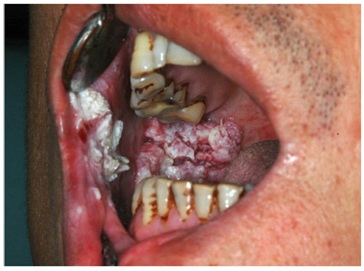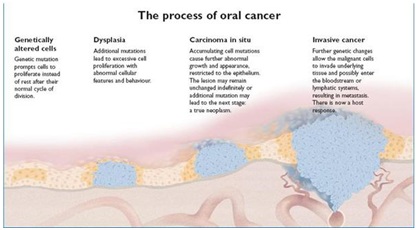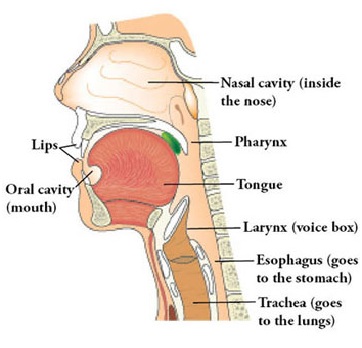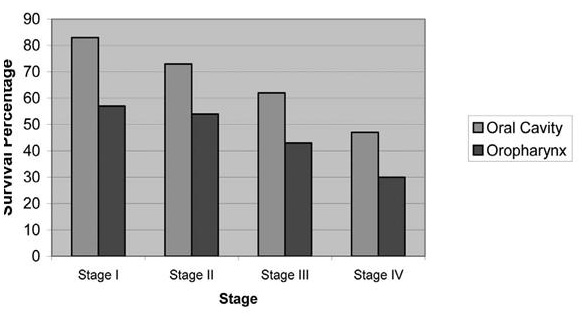Cancer originates in cells, the building blocks that make up tissues. Tissues make up the organs of the body. Normally, cells grow and divide to form new cells as the body needs them. When cells grow old they die and are replaced by the new cells.
Sometimes this orderly process goes wrong. New cells form when the body does not need them and old cells do not die when they should. These extra cells can form a mass of tissue called a growth or tumour.
Tumours can be benign or malignant:

Oral cancer is part of a group of cancers called head and neck cancers. Oral cancer can develop in any part of the oral cavity or oropharynx. Most oral cancers begin in the tongue and in the floor of the mouth. Almost all oral cancers begin in the flat cells (squamous cells) that cover the surfaces of the mouth, tongue and lips. These cancers are called squamous cell carcinomas.
Cancer cells can also spread to other parts of the neck, the lungs, and other parts of the body. When this happens, the new tumour has the same kind of abnormal cells as the primary tumour. For example, if oral cancer spreads to the lungs, the cancer cells in the lungs are actually oral cancer cells. The disease is metastatic oral cancer, not lung cancer. Doctors sometimes call the new tumour "distant" or metastatic disease. The death rate associated with oral cancer is high because it is diagnosed in late stages. Prognosis at this stage of discovery is significantly worse than when it is caught in a localized intra oral area. Oral cancer is particularly dangerous because in its early stages it may not be noticed by the patient, so it prospers without producing pain or symptoms and it has a high risk of producing second, primary tumours. This means that patient who survives a first encounter with the disease, has up to a 20 times higher risk of developing a second cancer. This heightened risk factor can last for 5 to 10 years after the first occurrence.

Oral cancer affects the oral cavity. The oral cavity is the first part of the digestive tract. It is a complex structure with nutritional, respiratory and communicative functions. The oral cavity is continuous with the pharyngeal cavity, a more complex and somewhat irregular space.

